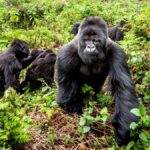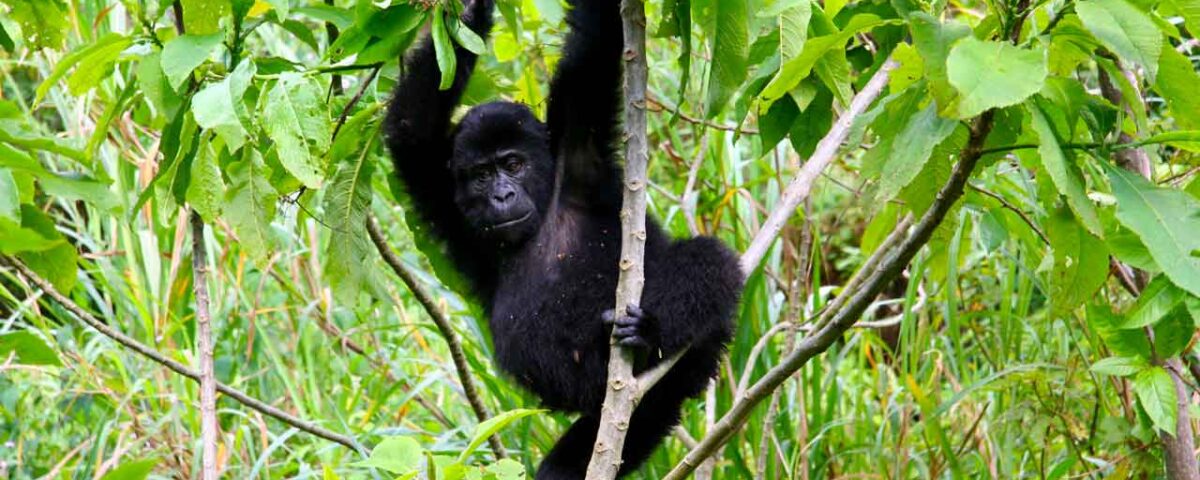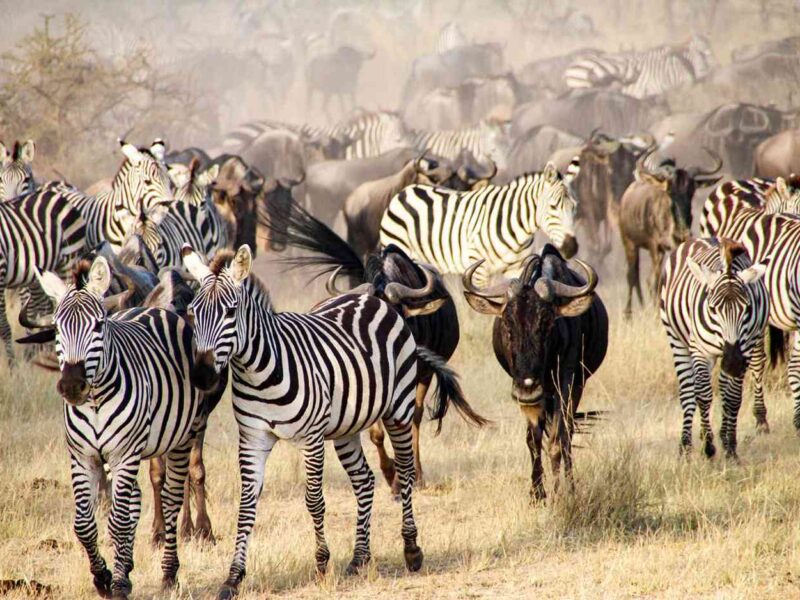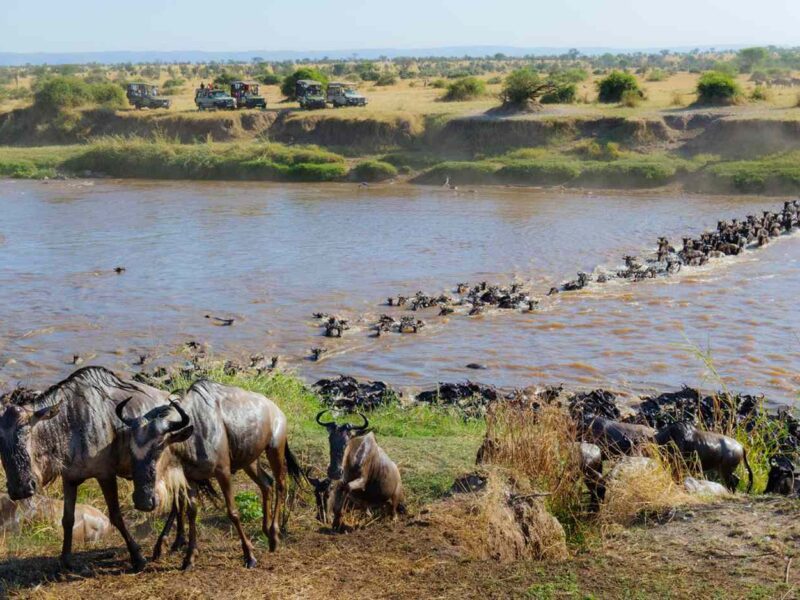
How Do I Book Gorilla Trekking?
March 28, 2025
Do Silverback Gorillas Eat Meat?
April 3, 2025Which Season is Best for Gorilla Trekking?
Gorilla trekking is a truly once-in-a-lifetime experience, offering travelers the opportunity to witness the majestic mountain gorillas in their natural habitat. In Uganda, gorilla trekking is an unforgettable adventure in the lush forests of Bwindi Impenetrable Forest and Mgahinga Gorilla National Park. However, choosing the right season for this adventure plays a significant role in ensuring you have the best experience possible. Whether you’re seeking an easier trek or a more budget-friendly trip, the season you choose can have a considerable impact. At Ovacado Adventures Ltd., we aim to provide a comprehensive understanding of the two main seasons for gorilla trekking, the pros and cons of each, and how you can make the most of your trek.
Understanding the Two Main Seasons for Gorilla Trekking
Uganda experiences two distinct seasons: the dry season and the wet season. These seasons are influenced by the country’s tropical climate, where temperatures are generally mild, but rainfall can vary throughout the year. The timing of your trek largely depends on the kind of experience you are looking for—whether it’s clear skies, fewer tourists, or affordability.
The Dry Season (June to September, December to February)
The dry season is widely considered the best time to go gorilla trekking in Uganda. With minimal rainfall, the trails are drier, and the conditions are ideal for trekking through the dense forests. This season is divided into two primary periods:
- June to September: This is the peak season for gorilla trekking in Uganda. During these months, the weather is mostly dry, and the trails are easier to navigate. The reduced rainfall ensures that the gorillas remain in lower altitudes, making it easier to track them. The dry season also offers great visibility, which is essential for spotting the gorillas and taking photos. The clear skies and mild temperatures make the trekking experience more comfortable for visitors.
- December to February: This period also falls within the dry season, though it’s not as popular as the mid-year months. The weather remains relatively dry, but temperatures can be slightly higher. This is an excellent time for those looking to avoid the peak season crowds. Although the conditions are still favorable, there may be the occasional light rain. The advantage of this period is that you can enjoy a more tranquil trekking experience with fewer tourists in the park.
Advantages of the Dry Season:
- Easier Trekking Conditions: With drier and firmer trails, trekking through the forest is much easier and less strenuous. There’s less risk of slipping in the mud, making it a more comfortable and enjoyable experience.
- Better Visibility: Clearer skies and reduced rainfall mean improved visibility for both trekkers and wildlife. Tracking the gorillas becomes easier as they tend to stay in lower altitudes, and you have a better chance of spotting them.
- More Predictable Weather: The dry season brings relatively stable and predictable weather, allowing for more straightforward trekking plans. The pleasant weather makes the experience comfortable for both trekkers and the gorillas.
- Healthier Wildlife: Gorillas tend to be more visible during the dry season as they move to lower altitudes and are more active in search of food. This makes it easier to locate and observe their behavior.
The Wet Season (March to May, October to November)
The wet season in Uganda brings heavy rainfall, which can affect the trekking conditions. While the wet season may not be the first choice for many, it has its own set of advantages, particularly for those who are looking for a quieter experience and lower prices.
- March to May: These months mark the peak of the rainy season, with substantial rainfall that can make the trails muddy and slippery. The heavy rain can make the trek more physically demanding, as the dense forest trails become challenging to navigate. However, the gorillas may also move to higher altitudes to avoid the wet ground, making tracking slightly more difficult. Despite these challenges, the wet season offers an opportunity to experience the forest in its most lush and vibrant state, with rich greenery and fresh landscapes.
- October to November: The shorter rainy season between October and November also brings some rainfall, but typically less intense than the March to May rains. While the trails may still be slippery, and visibility may be reduced by occasional downpours, the lower number of tourists makes this period more attractive for those seeking a less crowded experience. The forest is especially beautiful during this time, with thick, rich vegetation that creates a lush backdrop for your adventure.
Advantages of the Wet Season:
- Fewer Tourists: The wet season is the least crowded time for gorilla trekking. With fewer visitors, you’ll have a more private and serene experience, allowing you to enjoy the tranquility of the forest and an intimate encounter with the gorillas.
- Lower Costs: The wet season typically sees lower prices for permits, accommodation, and other services. This is an excellent opportunity for budget-conscious travelers who want to experience gorilla trekking at a more affordable rate.
- Lush Scenery: The wet season transforms the landscape into a vibrant, green paradise. The forests are at their most lush, offering stunning photo opportunities and a completely different ambiance than during the dry season.
Challenges of the Wet Season:
- Slippery Trails: The wet season brings muddy and slippery trails, making the trek physically demanding. The muddy paths can slow down your progress and make the journey more tiring.
- Unpredictable Weather: Heavy rainfall can occur suddenly, and the wet conditions can sometimes obscure visibility. It’s harder to predict when it will rain, which may affect your plans or the trekking experience.
- Harder Gorilla Tracking: The gorillas tend to move to higher altitudes to avoid the wet ground, and tracking them becomes more challenging. It may take longer to find them, and the experience can be more physically taxing.
Choosing the Best Season for Your Gorilla Trekking Adventure
The ideal season for gorilla trekking depends on your personal preferences and priorities. If you prefer easier trekking conditions, clear skies, and more comfortable weather, the dry season (June to September, December to February) is undoubtedly the best choice. During this period, the trails are easier to navigate, the gorillas are more active, and the weather is predictable and pleasant.
However, if you seek a quieter experience with fewer tourists and lower costs, the wet season (March to May, October to November) offers a more peaceful trekking experience. While the conditions can be more challenging, the rewards of solitude and lush scenery may outweigh the difficulties for those seeking an affordable and less crowded adventure.
Tips for Trekking in Any Season
- Prepare for Weather Variability: Regardless of the season, it’s important to pack appropriately. For the dry season, lightweight clothing and sturdy footwear are ideal. During the wet season, be sure to pack waterproof gear, including rain jackets, boots, and ponchos.
- Physical Fitness: Gorilla trekking requires a moderate level of fitness, as the trails can be steep and uneven. Whether you choose the dry or wet season, make sure you are in good physical condition to handle the trek.
- Book Your Permits Early: Gorilla trekking permits are limited, especially during the dry season. Be sure to book your permit well in advance to secure your spot and avoid disappointment.
Conclusion
Gorilla trekking in Uganda is an unforgettable adventure, no matter when you choose to visit. Whether you prefer the ease of trekking in the dry season or the solitude of the wet season, Ovacado Adventures Ltd. ensures that your journey is nothing short of extraordinary. Our expert guides, personalized itineraries, and commitment to responsible tourism will help you create memories that will last a lifetime. Choose your season wisely, pack your gear, and get ready for an incredible encounter with the majestic mountain gorillas.





